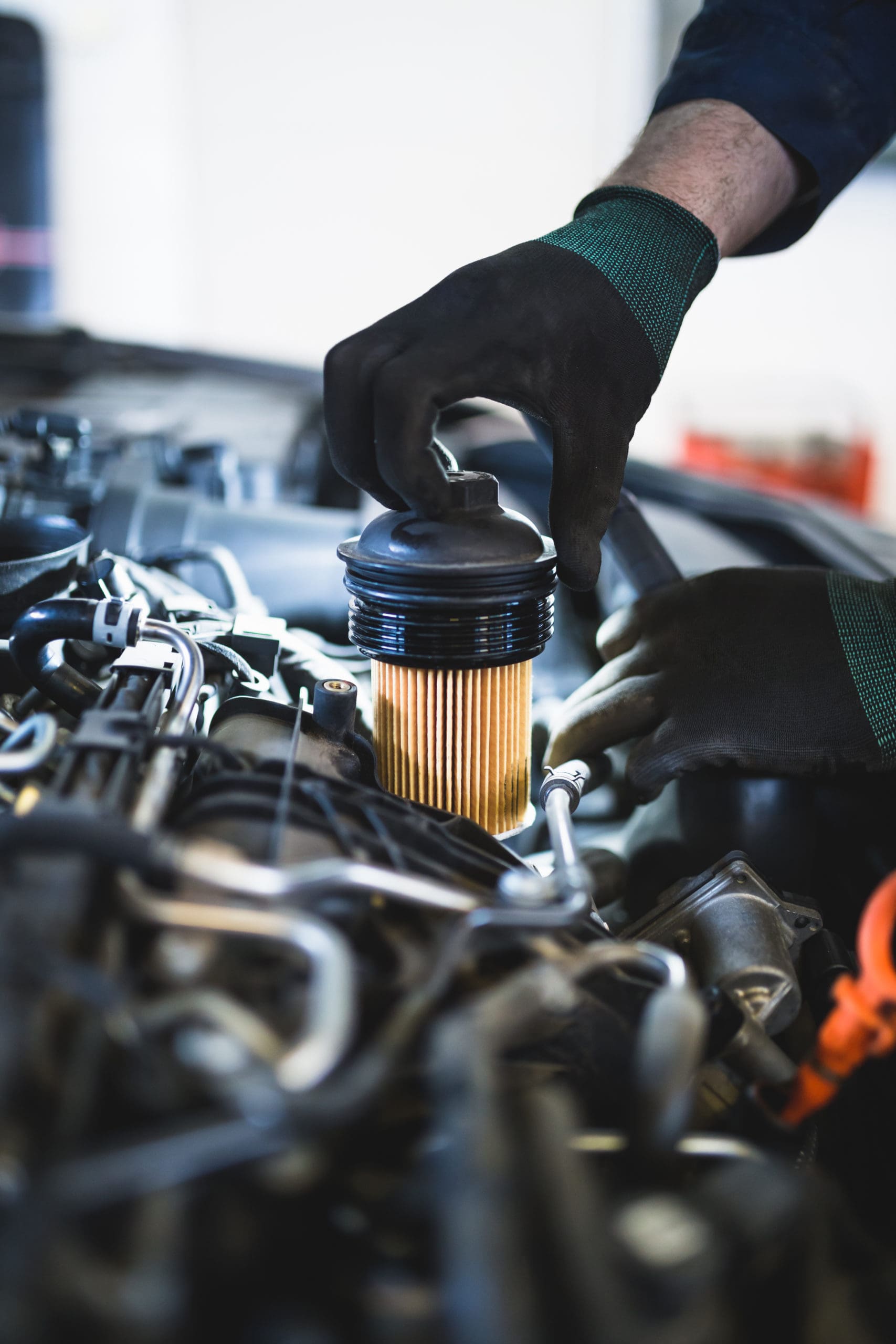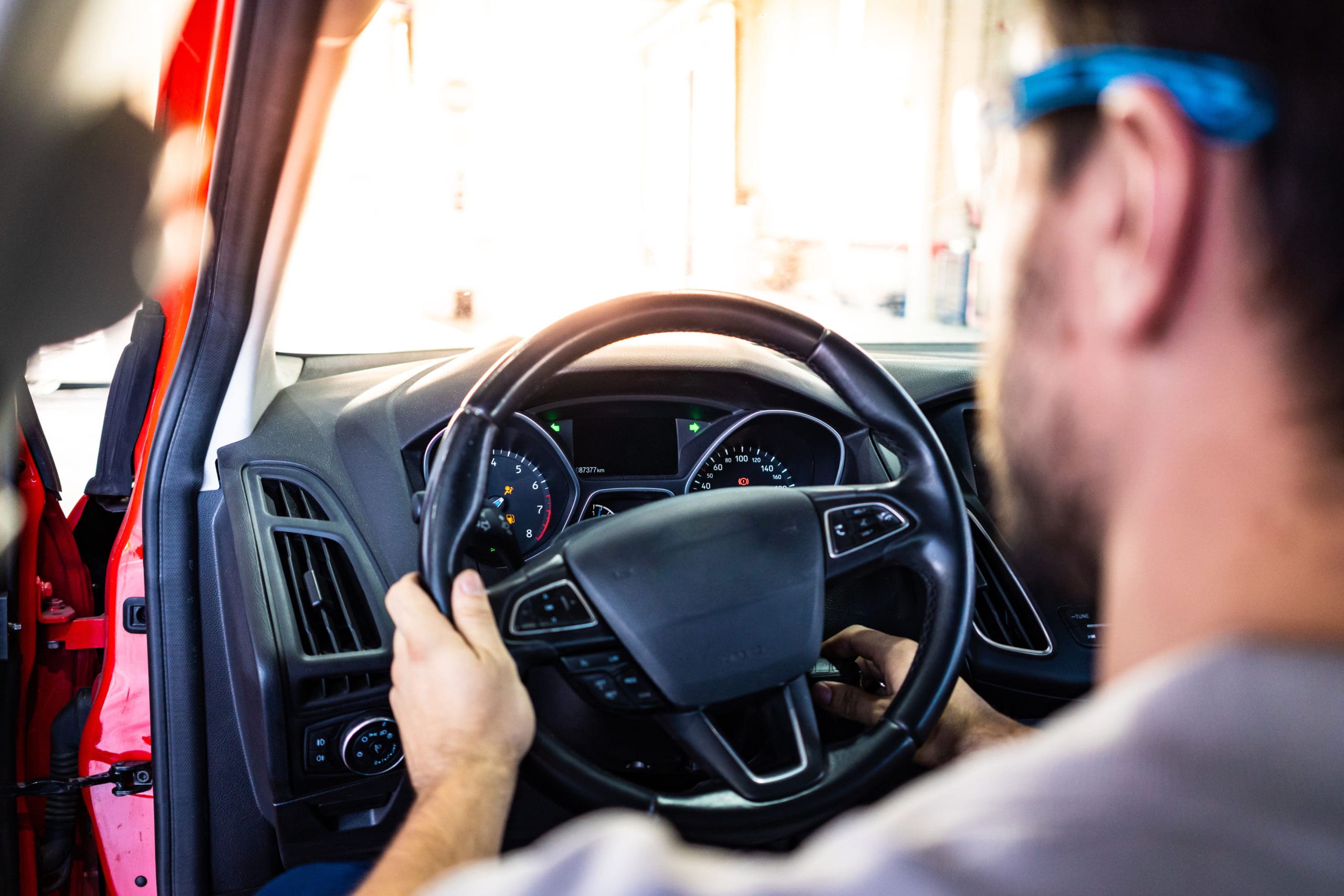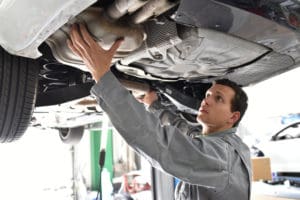
Prepare the engine and oil supply:

- Drain the engine oil, fit a new OE quality oil filter (pre-filled with oil) and refill the sump to/with the recommended level and grade of oil.
- Check the air inlet ducting/manifold and air induction pipes for any debris, cracks or damage. Clean thoroughly and replace where necessary.
- Install a new OE quality air filter.
- Ensure the exhaust ducting/manifold, exhaust pipework, EGR and associated pipes are clean, clear and undamaged. Replace if necessary.
- Fit new OE quality oil feed and return pipes.
- Clean and prepare all gasket or joint surfaces – ensure faces are flat and not corroded.
Install the turbo:
- Prime the turbo by injecting 10ml of the VM specified oil into the oil return outlet hole, using the syringe – you may have to turn it upside down to do this.
- Gently rotate the compressor wheel and shaft by hand for 30 seconds, while rocking it from side-to-side – the wheel should spin freely.
- Cover the hole with the sealing bung until ready to fit.
- Position the turbo, making sure the new oil feed and return pipes are correctly routed and primed.
- Fit new gaskets and o-rings, as required.
- Torque tighten the nuts and bolts securing the turbo to the exhaust manifold and exhaust gas outlet to VM settings.
- Fill the oil inlet hole with the correct engine oil and rotate the compressor wheel by hand again, for a minimum of 10 revolutions.
- Refit all turbo and boost pipework – ensure they are seated correctly and fasteners are in good condition.

Operate the vehicle:
- Before starting, crank the engine continuously with fuel shut off for 10 – 15 seconds to build oil pressure.
- Start the engine and allow it to run at idle for 3-4 minutes before accelerating.
- Check for any air, oil or exhaust gas leaks – whistling, buzzing, ticking or vibration signals a problem.
- Drive the vehicle gently for the first 10 to 20 minutes so the oil can reach optimum operating temperature.
- It is also good practice to let the engine cool before switching off after a lengthy or high-speed journey.

For your safety:
- Turbos can get very hot, so always allow it to cool down before touching.
- Keep hands, tools and material away from rotating parts when in use.
- Never remove the air intake pipe whilst in operation.
- Handle the unit with care – lift using the main housing only and not the actuator or pipes.
For more support on turbochargers, call our technical hotline on 01623 867996
For your safety:
- Turbos can get very hot, so always allow it to cool down before touching.
- Keep hands, tools and material away from rotating parts when in use.
- Never remove the air intake pipe whilst in operation.
- Handle the unit with care – lift using the main housing only and not the actuator or pipes.
For more support on turbochargers, call our technical hotline on 01623 867996



